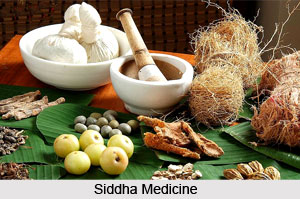In Ayurveda, health is defined as that state in which the three doshas are perfectly balanced ensuring that the five senses and the soul are working in harmony. When any imbalance in the doshas occurs, it is manifested in the body in the form of disease. According to the Ayurvedic sage Charaka, there are three causative factors behind any ailment. These three can be correlated with the mental, physical and environmental factors. As long as these factors are balanced, the doshas are well maintained and there are no signs of disease.
Reasons for Becoming Prone to Attack by Disease
The body becomes prone to attack by disease when the casual factors become unbalanced, which can occur due to three reasons: an excessive (atiyoga), deficient (hinayoga or ayoga) or incorrect (mithyayoga) action or situation. These three factors are the improper contact of the senses with their respective objects (asatmendriyartha samyoga), the improper use of the intellect (prajanaparadha), and seasonal variations (kala or parinama).
Parinama or kala also refers to the effects of time, and the natural physical transformation that are affected as time progresses. In short, kala or parinama is defined as "being out of harmony with the rhythms and cycles of Nature". Ayurveda talks about several important cycles at a macrocosmic level, which in turn affects the physiological conditions of human beings. Seasonal influences on the doshas, and the disorders associated with particular stages of life and aging are all included in this category. If an individual does not become aware of these cycles and modify his life accordingly, that discordance will lead to a disease state.
The external atmospheric conditions can generate disease by creating imbalance in the body through unnatural or extreme variations in temperature, rainfall or windy climate. Excessive or atiyoga of parinama occurs as a result of extraordinary or unexpected climatic conditions, such as unbearable heat in summer or extreme cold in winter. Deficient or hinayoga seasonal conditions include very slight temperature variations. Incorrect or mithyayoga parinama occurs when atmospheric conditions are opposite to those experienced in the normal season, such as cold temperature in the summer season or warm temperature in the winter season.
In short parinama collectively refers to those changes, which collectively bring changes in the body. Ayurveda suggests various therapies and measures to deal with such changes.




















